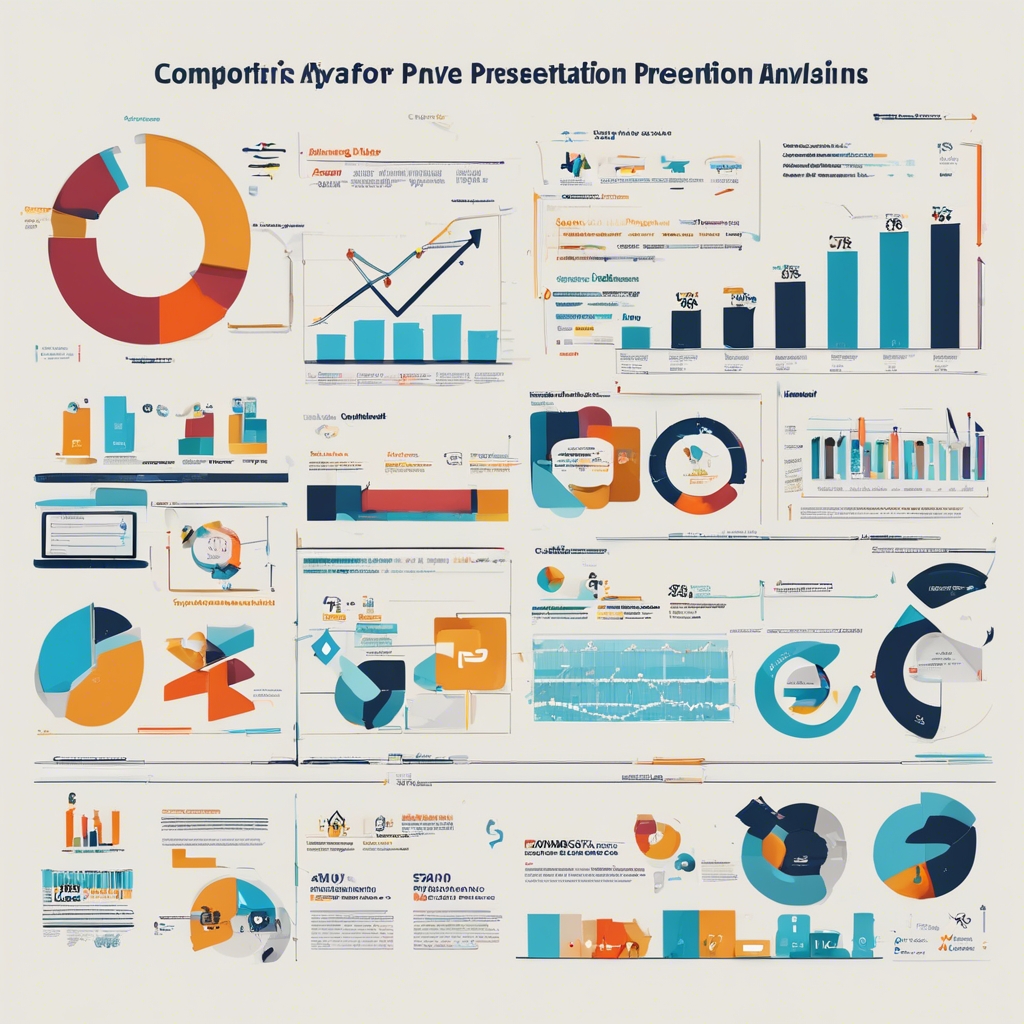Understanding Your Competitive Landscape: A Guide to Competitor Analysis Presentations
Crafting a competitor analysis presentation is an essential strategy for businesses aiming to thrive in today’s competitive marketplace. This in-depth analysis provides a comprehensive understanding of industry competitors, their strategies, and their positioning, enabling businesses to make informed decisions and stay ahead of the game. In this guide, we’ll explore the process of creating an effective competitor analysis presentation, offering valuable insights to help you navigate the business world with confidence.
**Step 1: Identify Your Competitors**
Begin by identifying your direct and indirect competitors. Direct competitors are those offering similar products or services to the same target market. For example, if you run a bakery, your direct competitors are other local bakeries. Indirect competitors, on the other hand, may have different products but cater to similar customer needs. In the bakery’s case, this could include grocery stores with bakery sections or online dessert delivery services. Creating a comprehensive list of competitors will lay the foundation for your analysis.
**Step 2: Gather Competitive Intelligence**
Collecting competitive intelligence is the heart of your analysis. This involves researching various aspects of your competitors’ businesses. Start by examining their website, social media presence, and online reviews. What products or services do they offer, and how do they position themselves in the market? Are they known for quality, innovation, or affordability? Understanding their unique selling propositions will help you identify areas where your business can differentiate itself.
Additionally, delve into their marketing strategies. How do they attract customers? Analyze their online advertising, email campaigns, and content marketing efforts. Are they leveraging social media influencers or running successful referral programs? By studying their customer engagement strategies, you can identify opportunities to enhance your marketing approach.
Financial data is also a crucial part of the puzzle. Publicly traded companies often provide financial reports, offering insights into their revenue streams, growth rates, and market share. This information can reveal their strengths, weaknesses, and potential vulnerabilities.
**Step 3: Analyze Strengths and Weaknesses**
Once you’ve gathered the necessary data, it’s time to evaluate your competitors’ strengths and weaknesses. Create a SWOT analysis (Strengths, Weaknesses, Opportunities, and Threats) for each of your main competitors. This involves identifying what they do exceptionally well and where they fall short. Are they quick to adopt new technologies, ensuring efficient operations? Or do they struggle with customer service, as indicated by numerous online complaints? Understanding these aspects will help you position your business effectively.
For instance, if a competitor is known for its innovative products but lacks an online presence, you can focus on strengthening your digital marketing to gain an edge in that area. Alternatively, if a competitor has a strong online reputation for customer service, you might consider investing in training programs to elevate your own customer support.
**Step 4: Benchmark Your Business**
Comparing your business to competitors is a vital step in the analysis. Evaluate your products or services, pricing, marketing strategies, and customer satisfaction against theirs. Are there significant differences in pricing or features? Do they have a broader product range? This comparison will pinpoint areas where you excel and where improvements can be made.
Let’s say you own a clothing boutique. Comparing your product range, pricing, and online reviews to those of similar boutiques can reveal gaps in your offerings or opportunities to improve customer experience. Perhaps you discover that a competitor offers free shipping, while you charge a flat rate, which could impact customer loyalty.
**Step 5: Develop Your Competitive Strategy**
With the analysis complete, it’s time to devise your competitive strategy. Identify the unique value proposition that sets your business apart. Are you able to offer personalized customer experiences, eco-friendly products, or unparalleled after-sales support? Use this to create a compelling narrative for your brand.
Consider the bakery example again. If your bakery uses locally sourced, organic ingredients, emphasize this in your marketing materials. Highlighting this unique aspect can help you attract customers who value sustainability and quality.
Additionally, outline your strategic actions based on your findings. If you identified a competitor’s weakness in customer support, detail how you will capitalize on this by enhancing your own customer service. Clearly articulate your plan to outmaneuver the competition and gain market share.
**Presentation Tips:**
– Use Visual Aids: Incorporate charts, graphs, and infographics to present data in an engaging manner. Visual representations make complex information more digestible and memorable.
– Storytelling Approach: Craft a narrative that guides your audience through the competitive landscape. A well-told story will keep your audience invested and help them retain the information.
– Compare and Contrast: Use direct comparisons to illustrate the differences between your business and competitors. This can effectively showcase your strengths and opportunities.
– Actionable Insights: Conclude your presentation with actionable steps and recommendations. Leave your audience with a clear understanding of the next steps to strengthen your competitive position.
In conclusion, a well-researched and structured competitor analysis presentation is a powerful tool for businesses to gain a competitive edge. By identifying competitors, gathering intelligence, analyzing strengths and weaknesses, benchmarking, and devising a strategic plan, you can make informed decisions and communicate your unique value proposition effectively. This process ensures that your business stays relevant and successful in a dynamic marketplace. Whether you’re a startup or an established business, competitor analysis is a vital practice for long-term growth and sustainability.

